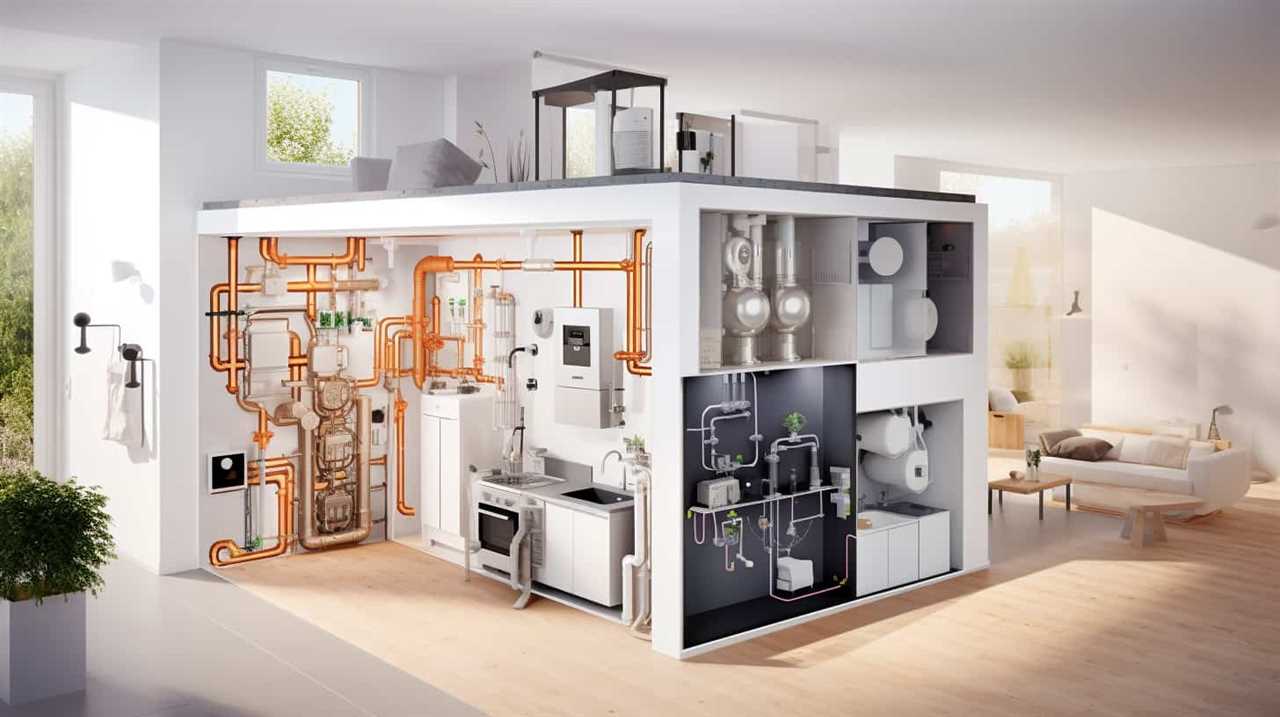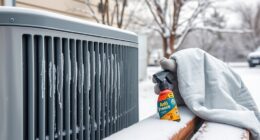Are you fed up with soaring energy costs and ineffective heating systems? Look no further, we have the perfect solution for you!
In our article, we’ll explore the benefits of optimizing heat pump performance with Energy Star ratings. By understanding the key factors that influence energy efficiency and choosing an Energy Star-rated heat pump, you can save both money and energy.
Plus, we’ll share tips for maximizing your heat pump’s performance and ensuring a cozy, cost-effective home.
Let’s dive in and start saving together!
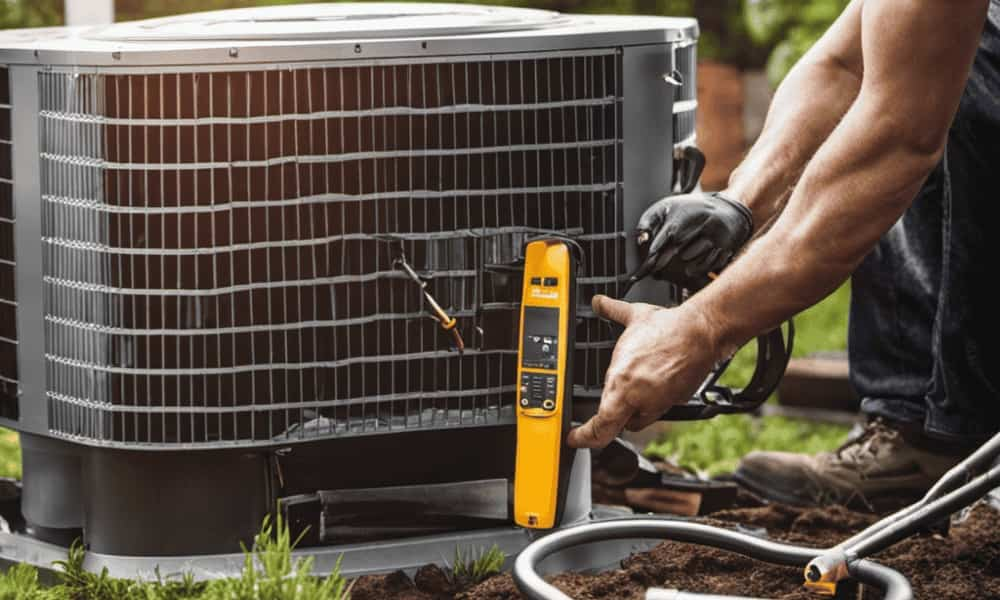
Key Takeaways
- Proper installation and regular maintenance are essential for optimal performance.
- Clean or replace air filters regularly to improve efficiency.
- Check and seal ductwork for air leaks to prevent energy loss.
- Use a programmable thermostat to optimize temperature settings.
The Importance of Energy Star Ratings for Heat Pumps
We believe that Energy Star ratings are crucial for optimizing the performance of heat pumps. Energy Star ratings provide numerous benefits for heat pumps, including improved energy efficiency and reduced energy consumption. By choosing a heat pump with an Energy Star rating, consumers can save a significant amount of money on their energy bills.
These ratings indicate that the heat pump meets strict energy efficiency guidelines set by the Environmental Protection Agency (EPA). Energy Star rated heat pumps are designed to operate more efficiently, resulting in lower energy usage and reduced environmental impact. By reducing energy consumption, these ratings help to decrease greenhouse gas emissions and promote a more sustainable future.
Investing in an Energy Star rated heat pump not only benefits the consumer financially, but also contributes to a greener and more energy-efficient world.
Understanding Energy Efficiency Ratings for Heat Pumps
Energy efficiency ratings for heat pumps can help consumers make informed decisions about their energy usage. Understanding these ratings is crucial in maximizing heat pump efficiency and increasing energy savings.
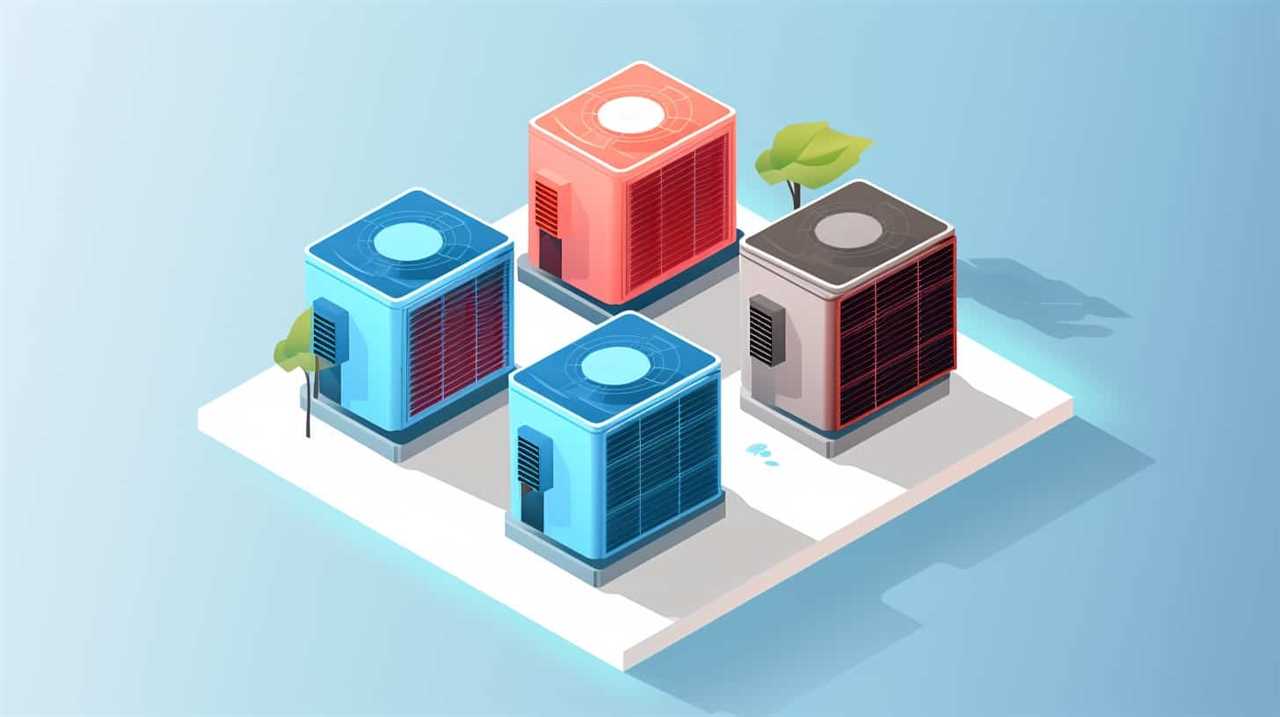
Here are three key aspects to consider:
-
Seasonal Energy Efficiency Ratio (SEER): SEER measures the cooling efficiency of a heat pump. The higher the SEER rating, the more energy-efficient the heat pump is, resulting in lower energy consumption and operating costs.
-
Heating Seasonal Performance Factor (HSPF): HSPF evaluates the heating efficiency of a heat pump. A higher HSPF rating indicates better performance and increased energy savings during the heating season.
-
Energy Efficiency Ratio (EER): EER measures the cooling efficiency of a heat pump at a specific outdoor temperature. It helps consumers understand the system’s efficiency under different conditions and make an informed decision about its usage.
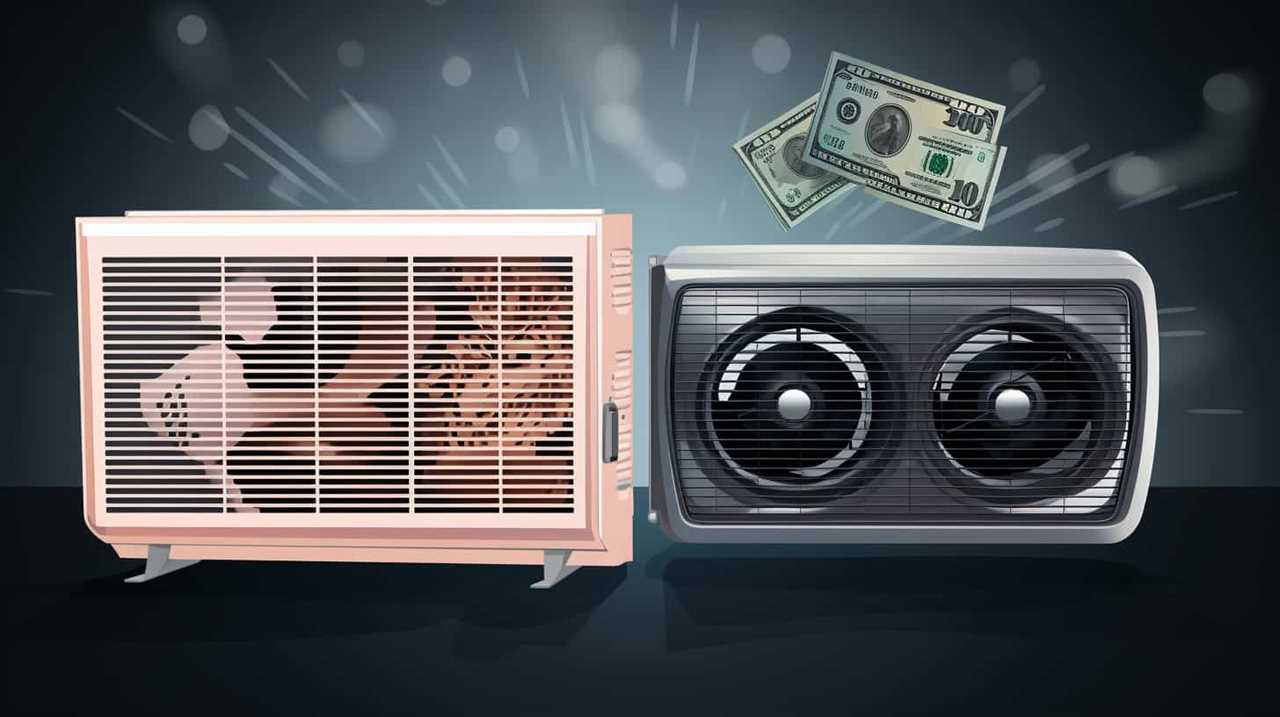
Key Factors Influencing Heat Pump Energy Efficiency
To maximize heat pump energy efficiency, we must consider key factors such as proper installation, regular maintenance, and appropriate sizing. These factors play a significant role in improving heat pump performance and reducing energy consumption.
Proper installation ensures that the heat pump is correctly connected to the electrical and plumbing systems, allowing for efficient operation.
Regular maintenance, including cleaning and inspecting the heat pump, helps prevent issues that can lead to decreased efficiency.
Additionally, appropriate sizing is crucial as an undersized or oversized heat pump can result in inefficient operation and increased energy consumption.
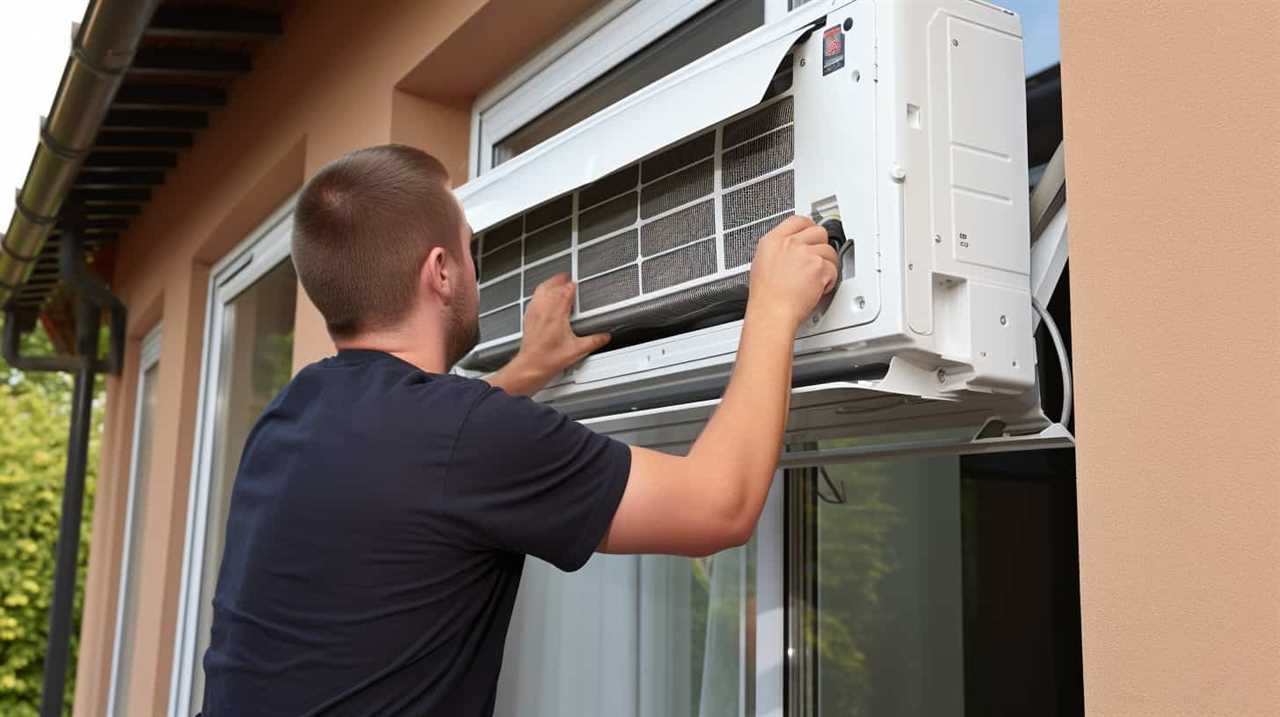
By considering these factors affecting heat pump efficiency, homeowners can optimize their heat pump’s performance and energy savings.
In the next section, we’ll discuss how to choose an Energy Star rated heat pump, which further enhances energy efficiency and reduces environmental impact.
How to Choose an Energy Star Rated Heat Pump
Our first step in choosing an Energy Star rated heat pump is to research the available options and compare their features and energy efficiency ratings. By selecting an Energy Star rated heat pump, we can enjoy a number of benefits, such as increased energy savings and reduced environmental impact.
When choosing a heat pump, consider the following:

-
Efficiency: Look for a heat pump with a high energy efficiency rating, indicated by the Energy Star label. This ensures that the heat pump operates efficiently and saves you money on your energy bills.
-
Features: Consider the specific features of each heat pump, such as variable-speed motors and programmable thermostats. These features can enhance the performance and convenience of the heat pump.
-
Size: Ensure that the heat pump is the right size for your home. An oversized or undersized heat pump may not provide optimal performance and energy savings.
Tips for Optimizing Heat Pump Performance With Energy Star Ratings
We can improve the performance of our Energy Star rated heat pump by following these simple tips.

One of the most effective energy saving strategies is to ensure proper installation and regular maintenance of the heat pump. This includes cleaning or replacing air filters regularly, checking and sealing ductwork for air leaks, and scheduling annual professional inspections.
Additionally, it’s important to use a programmable thermostat to optimize temperature settings and reduce energy consumption.
Taking advantage of the benefits of energy efficient heat pumps, such as their ability to provide both heating and cooling, can also contribute to overall energy savings.
Finally, it’s crucial to properly size the heat pump for your home’s specific heating and cooling needs, as an undersized or oversized unit can lead to inefficiency and increased energy costs.
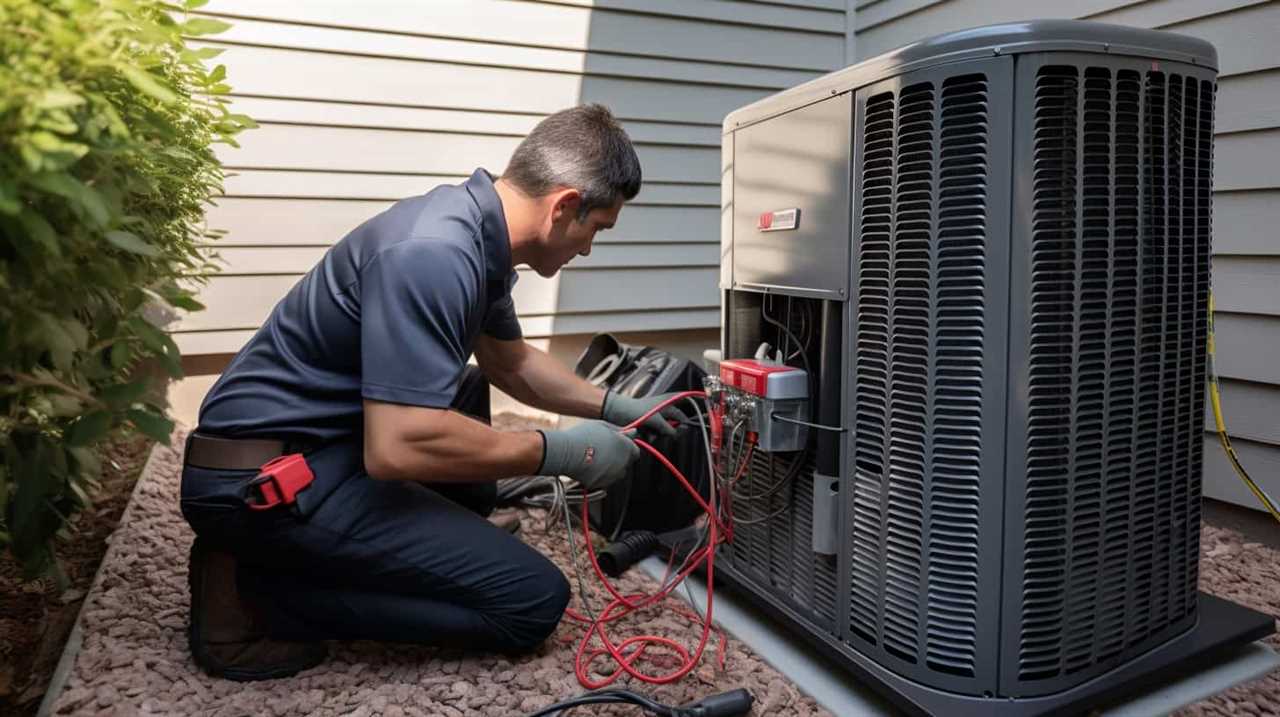
Frequently Asked Questions
Can I Install an Energy Star Rated Heat Pump on My Own or Do I Need Professional Help?
We recommend professional installation for an energy star rated heat pump. They have the expertise to ensure proper installation, which maximizes performance and efficiency. Installing a heat pump on your own may lead to suboptimal results and potential damage.
Are There Any Government Incentives or Rebates Available for Purchasing an Energy Star Rated Heat Pump?
Yes, there are government incentives and rebates available for purchasing an Energy Star rated heat pump. These incentives are part of energy efficiency programs aimed at promoting the use of energy-efficient appliances and reducing energy consumption.
How Long Does an Energy Star Rated Heat Pump Typically Last?
Energy Star rated heat pumps typically last an average of 15-20 years. These heat pumps not only provide energy efficiency and cost savings, but also contribute to a more sustainable and environmentally friendly home.
Can an Energy Star Rated Heat Pump Be Used in Both Heating and Cooling Modes?
Yes, an Energy Star rated heat pump can be used for both heating and cooling. Compared to a traditional heat pump, it offers greater energy efficiency, reduced operating costs, and improved comfort.

What Maintenance and Servicing Is Required for an Energy Star Rated Heat Pump to Ensure Optimal Performance?
To ensure optimal performance of an Energy Star-rated heat pump, regular maintenance and servicing are necessary. We recommend following the manufacturer’s maintenance requirements and scheduling professional servicing at least once a year.
Conclusion
In conclusion, choosing an energy star rated heat pump is crucial for optimizing its performance and energy efficiency. According to a study conducted by the U.S. Department of Energy, heat pumps with energy star ratings can save homeowners up to 20% on their heating and cooling costs compared to non-rated models.
By considering key factors influencing energy efficiency and following the tips provided, homeowners can make well-informed decisions to achieve maximum comfort and savings with their heat pump.



